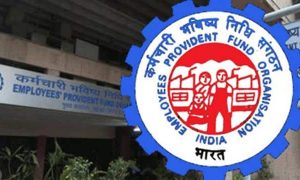I’ve retired at 60 with a corpus of ₹4.3 crore and my monthly expenses are ₹2 lakh. With a life expectancy of 85, how should I invest to maintain steady income while preserving my corpus? I am considering real estate, high-dividend stocks, and systematic withdrawal plans (SWPs). How can I diversify to balance growth, risk and capital protection? What portion should go into safe instruments such as fixed deposits (FDs) or bonds, and how much should I allocate to growth assets like equities and real estate for long-term sustainability?
Read More:- Top 10 Lifetime Free Credit Cards in India in 2024
Investing for the post-retirement stage is a very important exercise and it can work better for you if you plan for it. In this stage, we have to factor in the real growth rate of different assets and portfolios where returns are inflation-adjusted. At the same time, investing money across different asset classes can help you generate better returns and diversify.
Usually, the overall corpus can be invested in multiple avenues and withdrawals can be planned from them for 25 years. If we assume inflation of 6% p.a. for the post-retirement stage, and split the investment across three buckets—debt, hybrid and equity—then an investment of ₹3.65 crore will take care of your post-retirement objective.
Read More:- Coal India to fill 640 trainee posts through GATE 2025 scores: Check eligibility, salary and how to apply
The breakup is as follows: Invest ₹50 lakh in debt instruments to cover withdrawals for the first two years. Allocate ₹1 crore to hybrid mutual funds (MFs) for withdrawals during the next two years and the final four years (21st to 25th year), totaling six years. For the remaining 18 years in between, invest ₹2.25 crore in equity instruments to generate inflation-beating returns for your withdrawals.
With this increase in withdrawal amount, the invested corpus needs to grow at a higher rate. Hence, a good amount of investment will be needed in equity. Considering you have an existing corpus of ₹4.3 crore, investing in these buckets for regular withdrawals should be doable.
Read More: 10 Common Terms In Your Credit Report You Must Know
Investing in real estate will need a higher amount from your corpus, and at the same time, it will also have limited liquidity. The growth rate of real estate is also subjective depending on multiple factors.
Hence, you may consider all these points before diversifying in real estate. Ideally out of ₹4.3 crore, you need ₹3.65 crore to take care of your post-retirement withdrawals in view of the 6% p.a. inflation.
Read More: Fixed deposits offering up to 9% during festive season – Compare best FD rates
You will still have ₹75 lakh, so, some amount can be invested in a fixed deposit from a contingency perspective, and you may also consider investing in Senior Citizen Savings Scheme, which will help you keep some allocation in debt. For equity investments, you can consider investing through equity mutual funds.



































